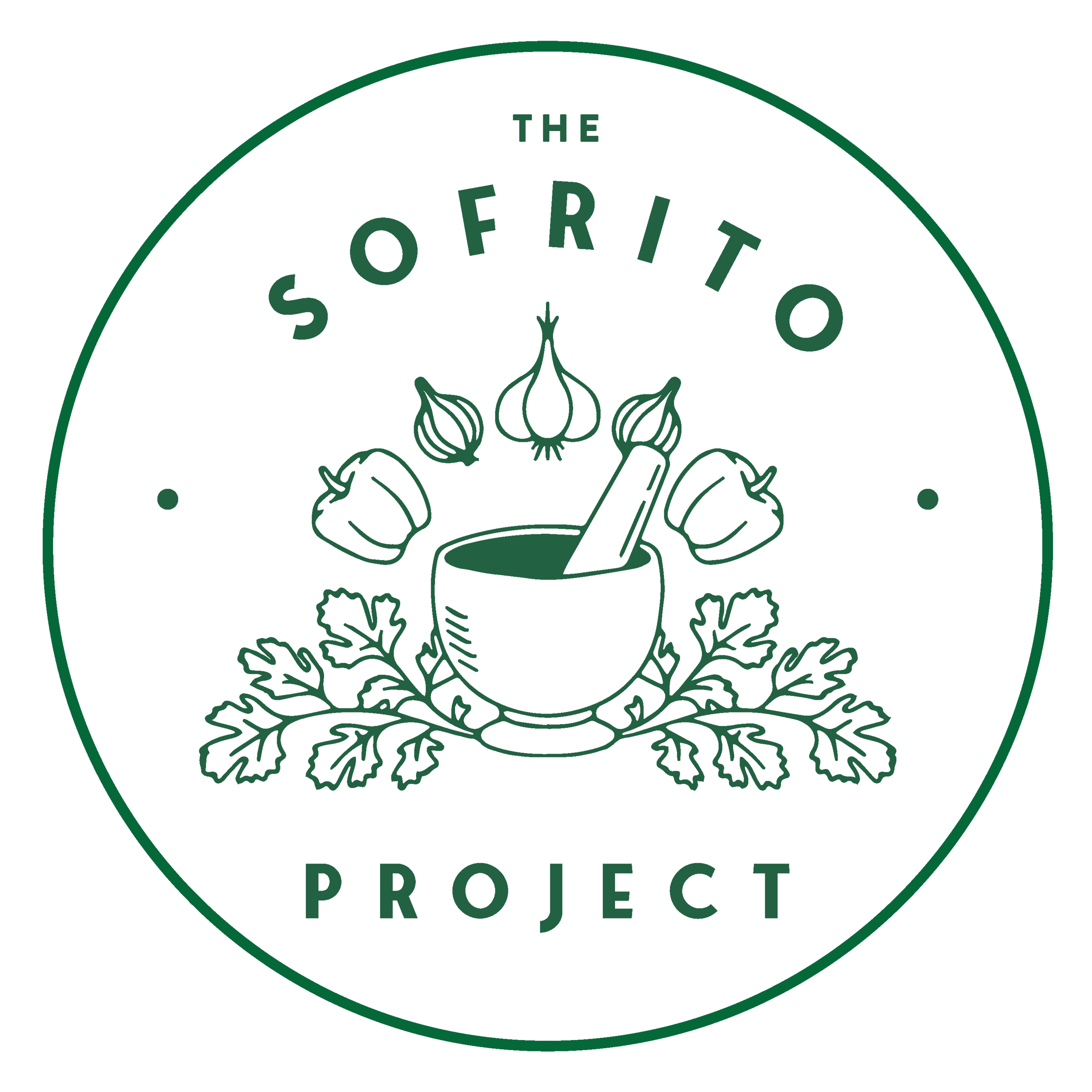Gandules con Bolitas de Plátano
My paternal grandmother was clever, funny and very creative. She was stubborn as hell and super opinionated. She fiercely loved her family and made sure to have a nurturing home for them. What I remember most is that she loved cooking and constantly spent her time in the kitchen; she would always find a task for me to do to help her. Shucking pigeon peas, rinsing the rice, stirring beans and taste testing her meals were my favorite.
I remember she would often eat pomegranate seeds at the kitchen table. Her brown hands slightly stained with the juice from the fruit meanwhile peering over her glasses to show me how to pick the seeds out without any fancy tricks. She would always hold my hand at the table or braid my hair in exchange for having me help her with the puzzles in English. She smelled of fresh fruit, Maja face powder, and perfume.
My father tells me constantly about how much I remind him of his mother. Dishes like berenjena con bacalao (stewed eggplant with salted cod), sopa de camarones (shrimp soup), arepas de maíz (corn fritters), and salmorejo de jueyes (rice with Puerto Rican land crab) were all meals that my dad grew up on and were some of my grandma's favorite to prepare. Whenever I visit my Dad in Puerto Rico, I make it a point to try and recreate the recipes that she made for him often from his childhood. This was one he shared with me and this is my take on it. Let’s get cooking!
Gandules con Bolitas de Plátano (Pigeon Peas with Plantain Dumplings)
Cook time: 25-30 minutes
Serves: 6-9
Olive oil
1/4 cup Simple Sofrito
2 15.5oz cans pigeon peas, with liquid
1/4 cup roasted red pepper strips, diced
2 small bay leaves
5-7 calabaza squash cubes (see note)
5 cups unsalted vegetable broth or water
Sazón spice blend, to taste
Kosher salt, to taste
Black pepper, to taste
2 medium green plantains, peeled and grated on small grate size (see note)
1 tsp adobo spice blend
1/2 tsp onion powder
Large pinch kosher salt
Note: calabaza squash is also known as West Indian pumpkin. I find it at my local Asian market and often buy it in bulk. When I break it down, I cube the pumpkin and store it in the freezer so I have it on hand whenever I need it. As far as grating the plantain, you want to make sure to use the smaller size grate on the grater when breaking it down. If you grate the plantain too large (like for arañitas) the dumplings will fall apart in the stew. I like using plantains that are starting to turn yellow since they add a little bit of sweetness to the dish. Definitely personal preference, but for the best results of making plantain balls that stay in shape, use the greenest plantain you can find.
In a large saucepan or pot over medium to medium-high heat, pour in a few turns of olive oil to lightly coat the bottom of the pot. Once hot, add the sofrito and sauté about 3-4 minutes. Next, add the cans of pigeon peas and their liquid, the roasted red peppers, bay leaves, and calabaza. Stir to combine and then add the vegetable broth. Season with sazón spice blend, kosher salt, and black pepper to your liking. Stir and then let the pigeon peas come up to a boil. Turn the heat down to medium-low and cook for 15 minutes with the lid partially open on the pot.
While that's working, grate the plantains into a medium sized bowl. Season with the adobo spice blend, onion powder, and large pinch of kosher salt. Combine well to make sure the seasonings are incorporated into the plantain and give it a teeny little taste to see how you like it. They should be slightly gummy and tacky from the starch of the plantain. This is normal and what you want to thicken up the stew.
Next, turn the heat down to low on the pigeon peas. Using a tablespoon, take the grated plantain and form them into roughly-shaped balls and gently drop them into the stewed pigeon peas, making sure to drop and spread them all over and not letting them stack up on top of each other.
Keep in mind, DON’T STIR the gandules and plantain dumplings yet. Gently push them a little into the liquid to make sure they’re mostly submerged and then cover with a tight-fitting lid to simmer and cook through, about 15-20 minutes or until the bolitas are firm all over. If you stir them before they fully set, they’ll fall apart completely.
Gently stir the gandules and plantain before serving. If some of the plantain balls fall apart while they cooked, that’s totally okay (mine did a little bit since I didn’t have any super green plantains). Rustic vibes are what we’re going for here, y’all. This dish is the epitome of ugly delicious! Once done, serve the gandules over steamed white rice and some sliced avocado.
¡Buen provecho!









